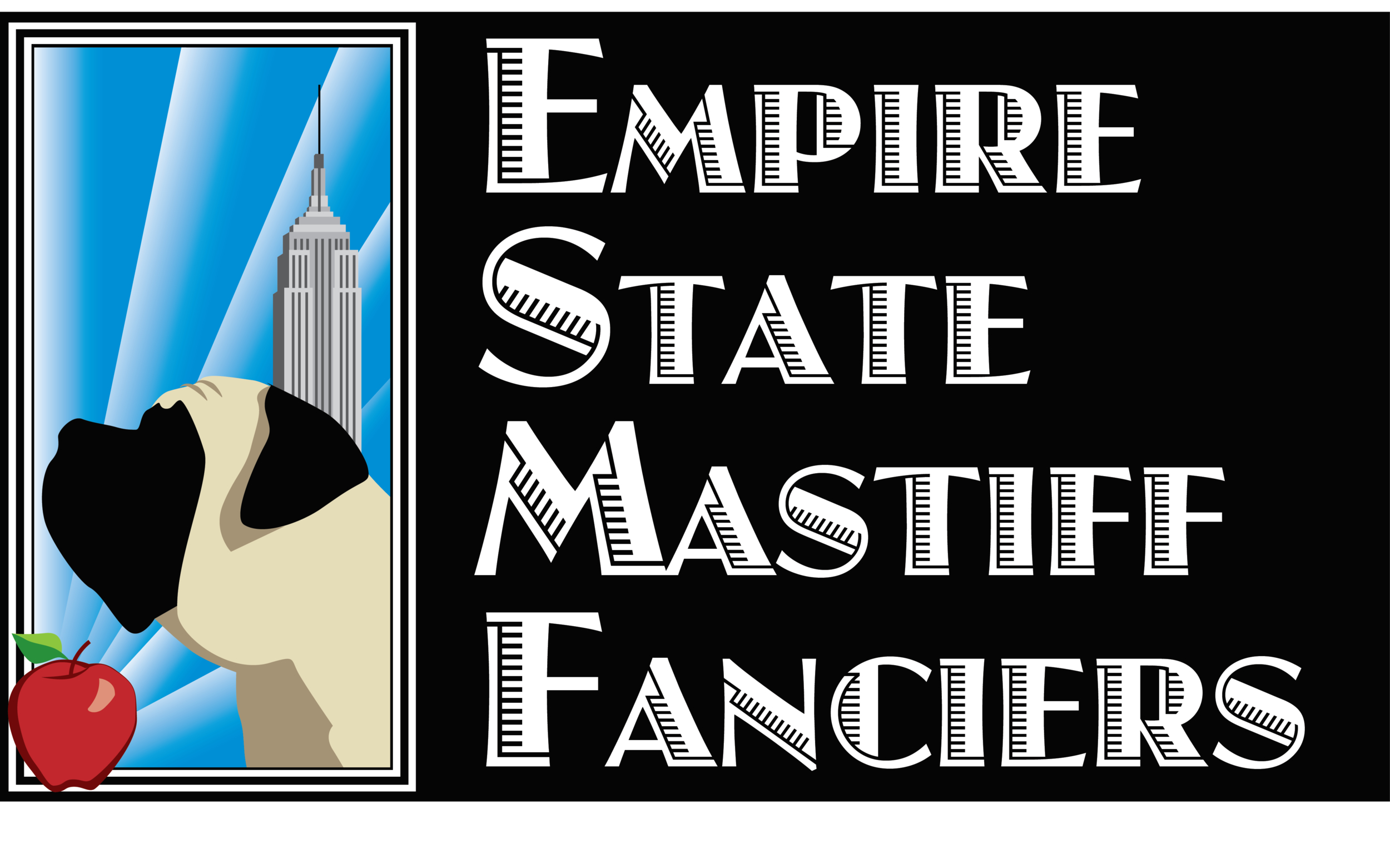True Companion and Guardian
Mastiff Breed Description
Owning a Mastiff can be the beginning of a wonderful relationship with years of happiness or it can be the beginning of overwhelming responsibility for which you may not be prepared. Mastiffs are loving, slobbery, gentle giants. While they are the largest of the dog breeds, they are very sensitive dogs and the sternest of voices is all you need for discipline. Positive training and socializing are key to happy well-adjusted dog.
Appearance
A very large dog resembling a St. Bernard in head and body, and a Great Dane in coat and color. Medium-sized floppy ears, long tail, large heads with medium muzzle, large body, big feet and heavy bone.
Size/Weight
Females approximately 27 inches at the shoulder, 150-190 pounds.
Males approximately 30 inches at the shoulder, 170-225+ pounds.
Colors
Fawn (tan), Apricot (red) and Brindle (fawn) or apricot with black stripes) with black muzzle and ears.
General
Contrary to popular belief, Mastiffs are not bred to produce copious amounts of drool which is collected and transformed into various grades of industrial lubricants and glue. Their sole purpose is to be by your side, make that leaning by your side, watching over you and your family. Mastiffs are giant dogs that bond very strongly with their owners. Since they are giants they take up a lot of room—on the couch, the bed, the hallway. You will spend a lot of time stepping over them! They are messy—they drool, have a habit of wiping their wet mouths on your lap, can knock over things (and children) with their tails and bodies. Since they are giants their upkeep is more expensive— collars, food vet bills will all be higher than what you would spend on a smaller dog.
Mastiffs are not high energy dogs. They require moderate exercise although they are happy to laze around on the couch. They are up for leisurely walks or short jogs but are not meant to go running for miles.
Visit the Mastiff Club of America for more information
History
Mastiffs have been bred for over two thousand years. Originally bred as dogs of war they evolved into keepers of the castle ultimately becoming the family companions and guardians that they are today. These giants of the working group are perfectly suited to their job.
Companion
As companions, they are gentle and tolerant. Making them excellent playmates for children. This is provided that all, children and dog, have been properly trained. Fond of resting for long periods of time, mastiffs make perfect pillows and bedwarmers. These qualities make mastiffs very good therapy dogs.
Mastiffs are not “yard dogs”. They wish to be by your side at all times, even if this means rousing themselves from their nap to follow you from room to room.
Mastiffs will lean on you, sit on your feet, rest their paw in your lap and even hold your hand in their mouths. How else can they be certain of your position in the universe and ensure that they are right by your side. They have earned the titled “Gentle Giants.”
Guardian
Mastiffs protect by intimidating with their size rather than any overt aggression. In fact your mastiff may protect you without you even realizing he has done anything. There have been several occasions where I have seen one of our mastiffs get up and stand over the baby carriage, only to lay back down with a sigh once the “danger” has passed. Usually a strange passerby or dog. However, should an interloper not get the hint, they will certainly sound the alarm. And a Mastiff bark is something that definitely draws attention!
Rest assured that mastiffs do not bark for every blowing leaf. They may completely ignore the daily visit from the mailman. This is not because they do not hear the intrusion but that they do not find it worthy of lifting themselves off the couch. Fear not for should the smallest of crumbs fall to the floor two rooms away, the Mastiff is on it!
Visit the Mastiff Club of America for more information

